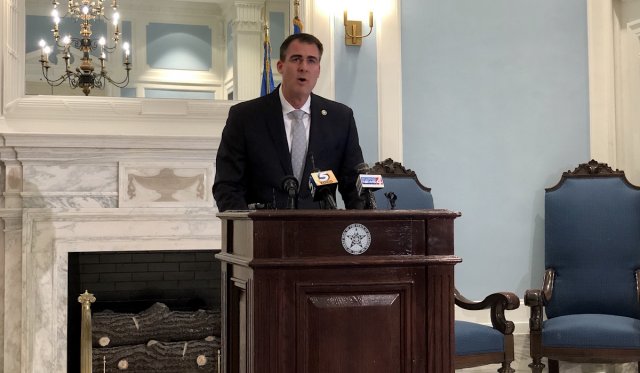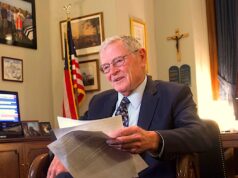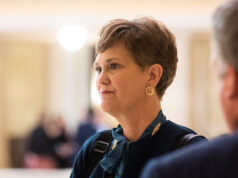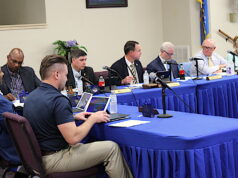This afternoon, Oklahoma Gov. Kevin Stitt signed two of three bills to prevent cuts to state agencies for April, but he blamed “leadership” of the House of Representatives for playing “politics” with digital transformation funding. He called on the Legislature to return this month to restore that funding, at which point he would ask the Board of Equalization to certify an official revenue failure and avoid May and June cuts.
“We had a deal with the Legislature to fully fund state government for April, May and June,” Stitt said. “House leadership wanted to use this time to play Washington D.C. politics to sneak in some last-minute changes while Oklahomans are hurting.”
Stitt said digital transformation funding — which could improve websites, help state employees work from home and make state services more accessible to citizens told they are “safer at home” — is “more important now than ever.” He said 165,000 Oklahomans have lost jobs during the COVID-19 economic slowdown, and he pointed to the Oklahoma Employment Security Commission as a key agency with an outdated website and cumbersome processes.
“The bills the Legislature sent me fully funded everything except for one priority — digital transformation. That broke our agreement,” Stitt said. “We’ve had a great working relationship with the Legislature, so I was really surprised that this happened. I want to put this to bed. But the people of Oklahoma elected me to hold true to my word, and I would be letting them down if I let House leadership play politics at this time.”
A request for comment from House leadership was not responded to by the publication of this story, but House Speaker Charles McCall (R-Atoka) released a statement Tuesday after Stitt had floated the notion of budget cuts.
“The Legislature will not authorize cuts to core services during a pandemic response because the public needs its services right now,” McCall said. “The state’s reserves, which exist for emergencies just like this, are sufficient for services to continue uninterrupted.”
What Stitt signed
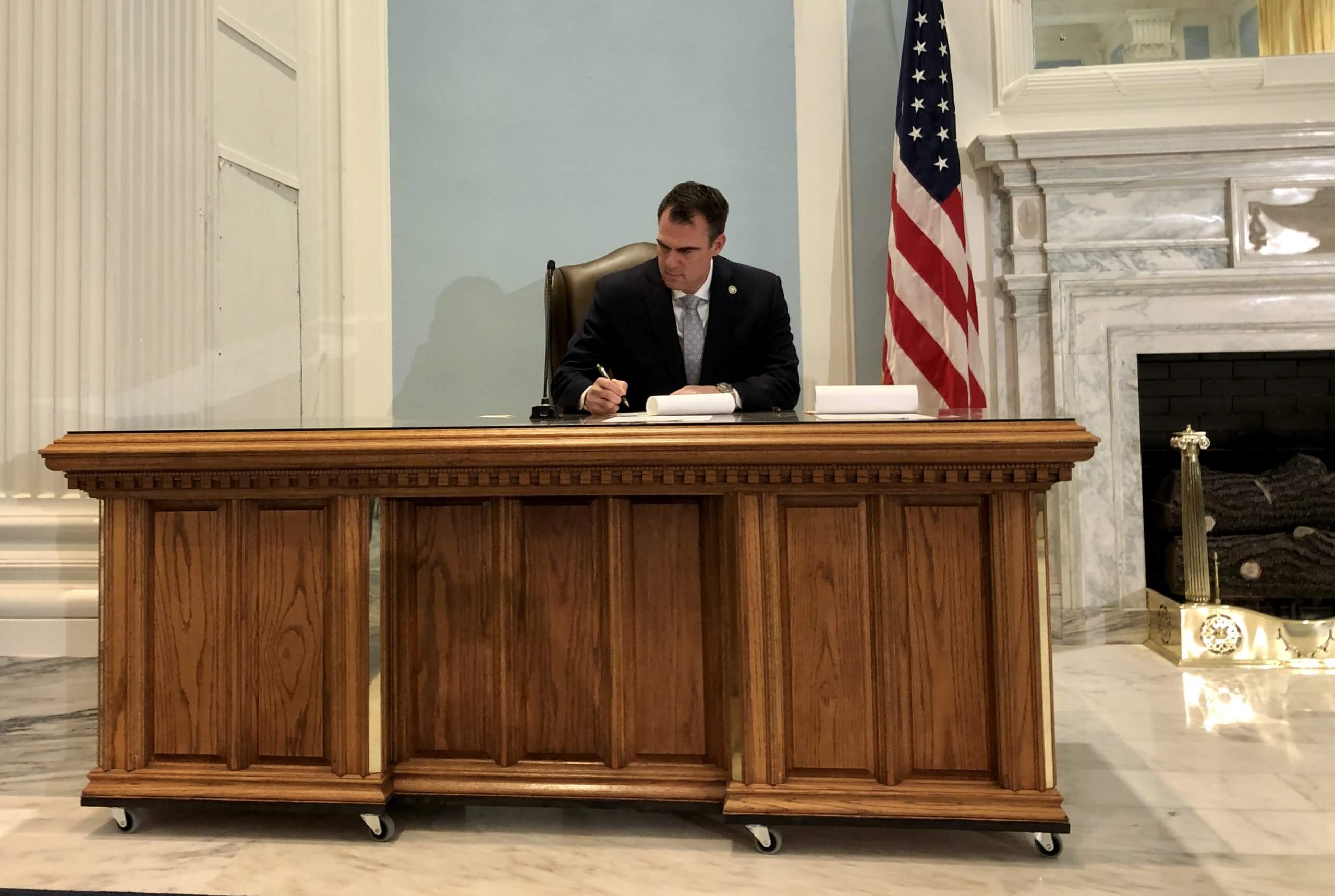
Today, Stitt signed SB 617 — which authorized the Office of Management and Enterprise Services to distribute Revenue Stabilization Fund money and included the functional cut to digital transformation funding — and SB 1053, which sent $201,559,654 from the Constitutional Reserve Fund to the Revenue Stabilization Fund, as allowed by the governor’s emergency declaration.
Stitt did not sign SB 199, which would appropriate $302,339,481 from the Constitutional Reserve Fund (commonly called the Rainy Day Fund) to the General Revenue Fund. That action cannot be taken until the state Board of Equalization officially declares a revenue failure. Chaired by the governor, the board had been scheduled to meet April 6, but the meeting was cancelled owing to the governor’s concern about the cut to the Digital Transformation Revolving Fund.
Stitt said the Board of Equalization would meet after the Legislature returned to solidify digital transformation funding, which he said is about $930,000. Earlier in the week, Senate President Pro Tempore Greg Treat (R-OKC) had said the number was about $250,000.
“The (Oklahoma) Constitution says the Board of Equalization has got to certify any kind of revenue failure to pull money out of the Rainy Day Fund,” Stitt said. “We’ve got a lot of work to do. I think Oklahomans understand how important digital transformation is.”
Lorem ipsum dolor sit amet

At the time of Stitt’s press conference, multiple requests for comment from the House of Representatives about their decision to not restore digital transformation funding had gone unanswered since Monday. Meanwhile, the state’s innovate.ok.gov website had included several pages featuring Latin placeholder text and noted eight live projects, 16 efforts in the beta stage and one in the alpha stage of development.
But minutes before Stitt entered the Capitol’s renovated Blue Room, the website went down. Some state lawmakers and Capitol observers had been texting the various incomplete site pages to media and others, identifying the placeholder information as an ironic red flag.
“I can’t speak specifically to the specifics of what they are addressing,” Stitt said of the website, noting that his administration releases monthly reports about transformation efforts.
Before the site was taken down, it included links to five tabs under “projects”:
- Oklahoma Checkbook
- Mobile ID
- Web Ops
- Gov Service
- Data Portal
After the publication of this story, the site became available again, with some pages still featuring placeholder text.
Stitt noted that Oklahoma’s PeopleSoft system — used for human and financial management — is not running the current version 9.2, update image 35.
Stitt said he still believes the Legislature should consider a 1 percent or 2 percent cut for state agencies in Fiscal Year 2021, which begins July 1.
“We absolutely need to tighten our belt,” the governor said.
He reiterated his belief that he had an agreement with House and Senate leaders to fill all funds for the end of FY 2020.
“Truth is on my side. I’m telling Oklahomans exactly what happened,” Stitt said. “The point is we had an agreement. It was made on Friday between the leadership and myself and the appropriations chairs.”
But on Monday, Stitt entered McCall’s office around noon to voice his concerns about the digital transformation situation. Asked multiple times today to relay the reasoning given to him by the House, Stitt declined to speak on McCall’s behalf.
“You’ll have to ask them,” Stitt said. “You have to stick by your word.”
Wallace: ‘There really is a breakdown in the communication’
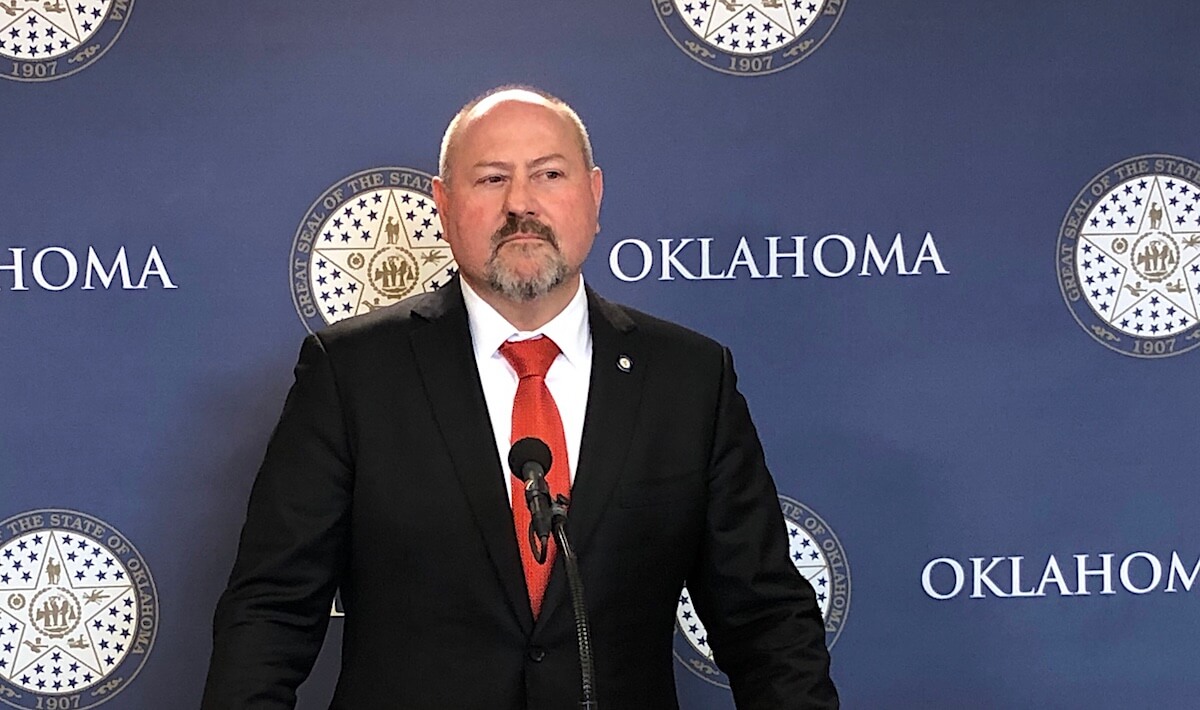
About four hours later, Senate Appropriations and Budget Chairman Roger Thompson (R-Okemah) and House Appropriations and Budget Chairman Kevin Wallace (R-Wellston) held a Zoom videoconference call with media to address Stitt’s statements and the budget negotiations that led to the controversy.
Wallace answered the question media have asked since Monday about the Digital Transformation Revolving Funding cut.
“There was a discussion going on about having more transparency in the process and what the fund was actually going to be used for,” Wallace said. “It’s one of [the governor’s] initiatives. He requested $15 million in FY 2020’s budget and said they would work with the Legislature basically (on) how we would transition to a digital age to bring us from, you know, 40-something in the nation to the Top 10.”
Wallace said one of the initial features being developed by Secretary of Digital Transformation David Ostrowe was a “dashboard” showing state expenditures by agency. He said the Legislature was receiving progress reports until January.
“We were asking for more detail, and as we looked at the funds in the account, we are basically nine months through the year. There is $8.5 million roughly in the account, there’s three more months of appropriations coming in at $1.25 million,” Wallace said. “Literally there will be 75 percent of the money — about $12 million — at the end of this year, and there’s still no real roadmap on what we are doing and where we are heading with the funds.”
Wallace said the Legislature knew that by certifying the governor’s “health emergency” declaration, lawmakers were giving Stitt up to $50 million to use to address the COVID-19 crisis.
Thompson said he checked to see whether digital transformation funding might be used to assist the Oklahoma Employment Security Commission address high rates of unemployment insurance claims.
“We were very concerned about the unemployment, so I checked with the administration and asked them, ‘Would there be any of this digital transformation money used for OESC,’ and the answer that I received was, ‘Not at all,'” Thompson said. “They have $30 million in a trust fund that is going to be used for OESC and for the continuing of modernization in that area.”
Asked why Stitt had not been directly told of the digital transformation cut, Wallace revealed typically private details of state budget negotiations, not only as they involve the FY 2020 revenue failure, but also for construction of the full FY 2021 budget.
“The negotiations are between the House, Senate and the governor. But the governor has not been in a single one of these negotiations this year. His representative — which is [Secretary of Budget and Finance Mike] Mazzei — has been in the room,” Wallace said. “On the House’s balance sheet and spreadsheet, we have had no additional funding for digital transformation funding going into FY 2021. That is a message we need to have more of a conversation.”
Asked about Stitt’s claim that the digital transformation funding cut was passed at the “last minute,” Wallace questioned the communication between Stitt and Mazzei.
“The cuts were not snuck into the bill. We’d been having conversations through budget negotiations with his representative,” Wallace said. “What I’m really concerned about is that maybe the information and communication within the budget negotiations were not getting delivered back to the governor. I can’t answer for that. I can tell you that we’ve been having discussions about the funds and digital transformation for quite a few weeks.”
Wallace said legislative leaders took umbrage with Mazzei during a phone call about how the unprecedented April 6 legislative process would work so that all three bills could be heard on one day in the age of social distancing.
“Whenever we got on the call on Friday and Mazzei started to tell us how he wanted us to run bills, and we’re like, ‘No, no, no, we’re going to run these three bills and this is why and how,’ it was like, ‘I don’t want to go back and talk to the governor about this. Blah, blah, blah. It took me forever to convince him not to cut [FY 2020]’s budget,'” Wallace recalled Mazzei as saying. “And that’s what we’re really after. The conversation is [Stitt] wants to make the cuts to [FY 2020]’s budget, supposedly. His team has drug him along. He’s still indecisive. Does he really not want to cut [FY 2020]’s budget, or would he like to cut [FY 2020]’s budget? The Legislature is very firm that in time — right now — of crisis and need, it is not the time to cut [FY 2020]’s budget.”
Wallace called the situation “frustrating” and said Mazzei also got “frustrated and actually ended the phone call.”
“There really is a breakdown in the communication, I do believe, between the representative of the governor’s office and the governor,” Wallace said. “But I will say this in defense of the governor: He is dealing with something that is historic. No one has ever dealt with it before. It is a true health crisis and a pandemic. I know he is overwhelmed with that, and I’m just not positive that he is getting the time he needs with his secretary of finance — his representative in the budget negotiations — to make sure that all of the information is getting relayed back to him.”
Asked about last year’s tension between Mazzei and the Senate, Thompson emphasized that the Legislature “is a co-equal branch of government.”
“We’re at the end of the budget cycle, we are almost ready to start presenting the [FY 2021 budget]. My concern is now I’m hearing that we are reaching out to the different agencies and asking them all to re-submit budgets at a 3 percent cut. So, yes sir, I have concern with that. A great deal of concern with it,” Thompson said. “We take our responsibility very, very seriously to make sure we are representing the people of Oklahoma, and I believe this week that when we have had almost 100 percent of Democrats and Republicans saying this is the path we want to go forward (…) I believe that the executive branch, Sec. Mazzei, needs to be working with us as well. So are there concerns there? Yes.”
An inquiry about Mazzei’s response to the comments of Wallace and Thompson was sent to the governor’s communications chief, and this story will be updated if one becomes available.
(Update: This story was updated at 3:50 p.m. to reference innovate.ok.gov reappearing online. It was updated again at 7:05 p.m. to include comments from Wallace and Thompson.)









